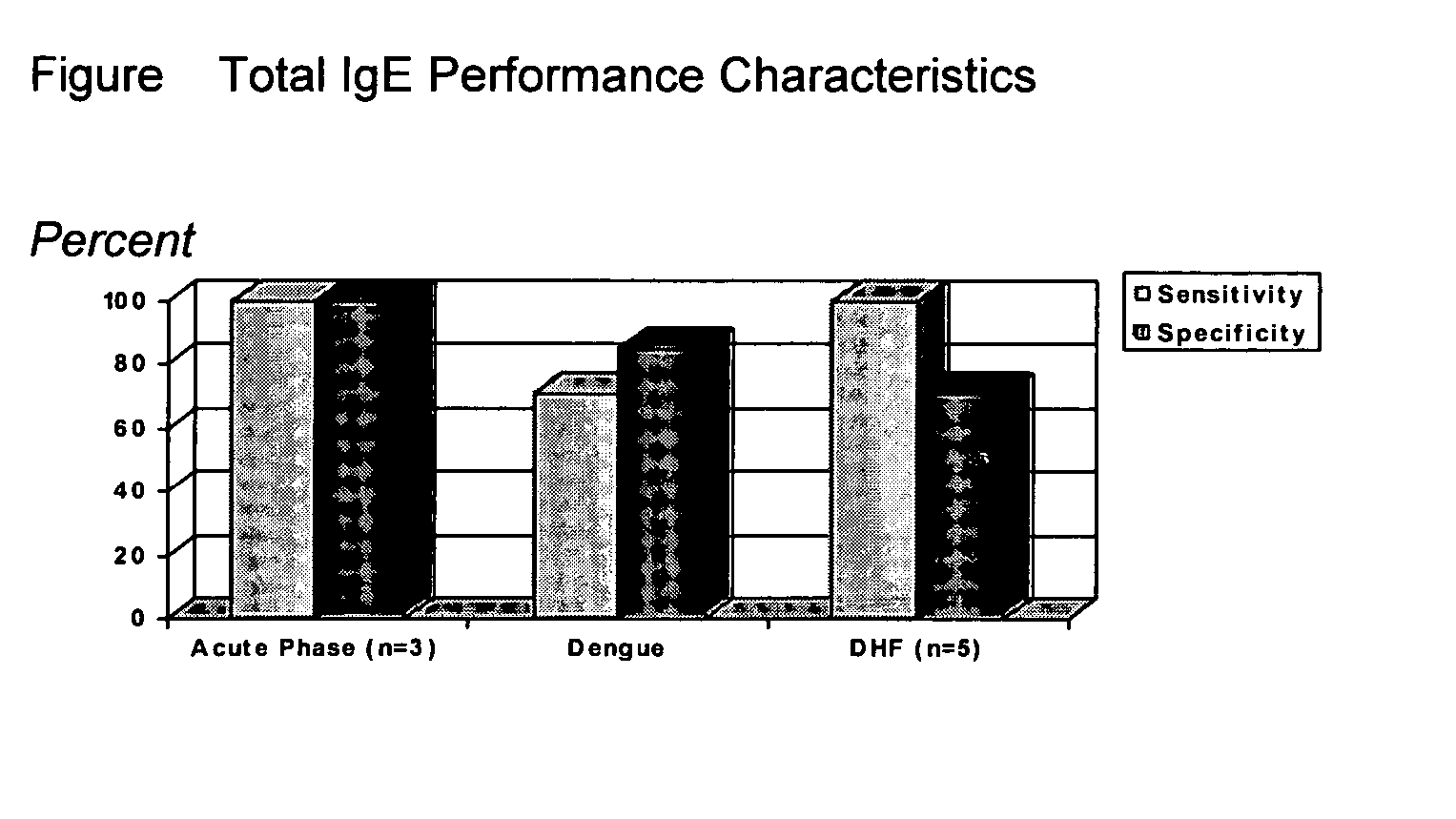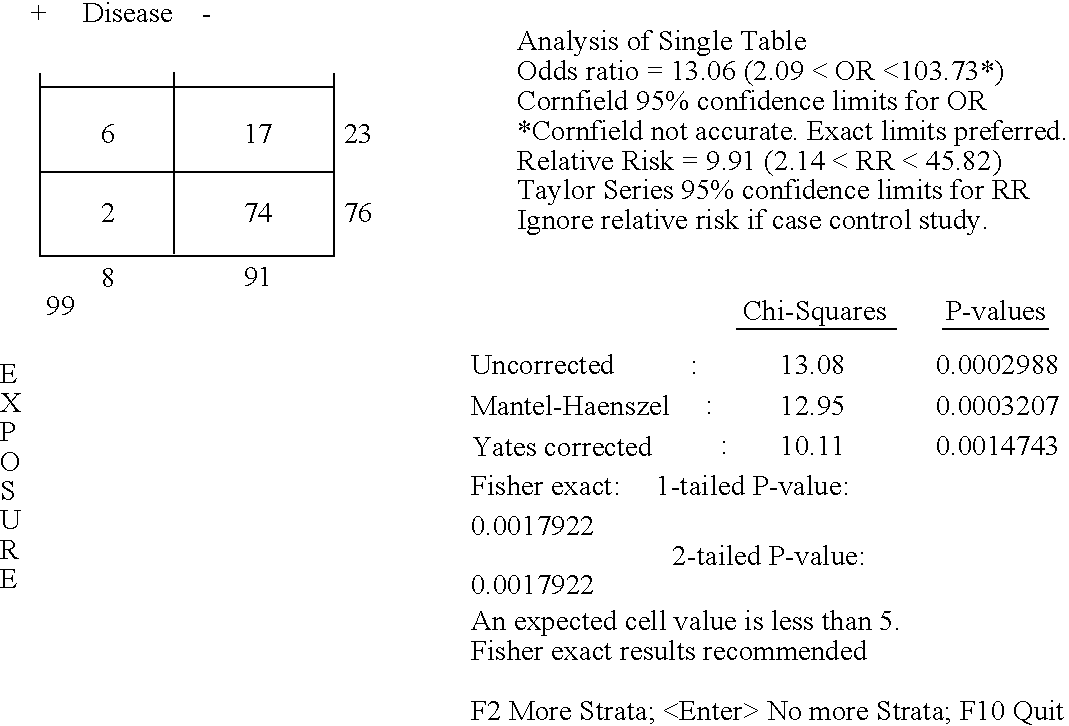Diagnostic assays
a diagnostic assay and antibody technology, applied in the field of diseases diagnosis and diagnostic assays, can solve the problems of inability to detect disease, and inability to detect disease, and achieve the effect of facilitating inflammatory reaction and improving efficiency
- Summary
- Abstract
- Description
- Claims
- Application Information
AI Technical Summary
Benefits of technology
Problems solved by technology
Method used
Image
Examples
Embodiment Construction
Human Immunodeficiency Viral Infection
[0007] A total of 170 serum samples were collected between 1987 and 1993 from HIV-1-infected (n=116) and HIV-1-seronegative (n=54) adults being monitored at the University of Miami School of Medicine. All samples were tested in the E. M. Papper Laboratory of Clinical Immunology by using duplicates, and the laboratory investigator was blinded as to the infection status. Blood specimens were collected, and serum or plasma samples were separated and stored at −20° F. until needed for the analyses. All samples were subjected to the following techniques: HIV PCR, ELISA, Western Blot using IgG, IgM and IgE.
[0008] Western Blot reactivity bands demonstrated that IgE reacted with the following HIV virus antigens: gp120, gp160 and gp 41. In addition, our work found that IgE strongly reacted with pol 66, gag 55, p32, env 18 and p24. While IgE response against gp120, 160 and 41 has been confirmed by other researchers and published (Maroone and Khalife), ...
PUM
 Login to View More
Login to View More Abstract
Description
Claims
Application Information
 Login to View More
Login to View More - R&D
- Intellectual Property
- Life Sciences
- Materials
- Tech Scout
- Unparalleled Data Quality
- Higher Quality Content
- 60% Fewer Hallucinations
Browse by: Latest US Patents, China's latest patents, Technical Efficacy Thesaurus, Application Domain, Technology Topic, Popular Technical Reports.
© 2025 PatSnap. All rights reserved.Legal|Privacy policy|Modern Slavery Act Transparency Statement|Sitemap|About US| Contact US: help@patsnap.com



